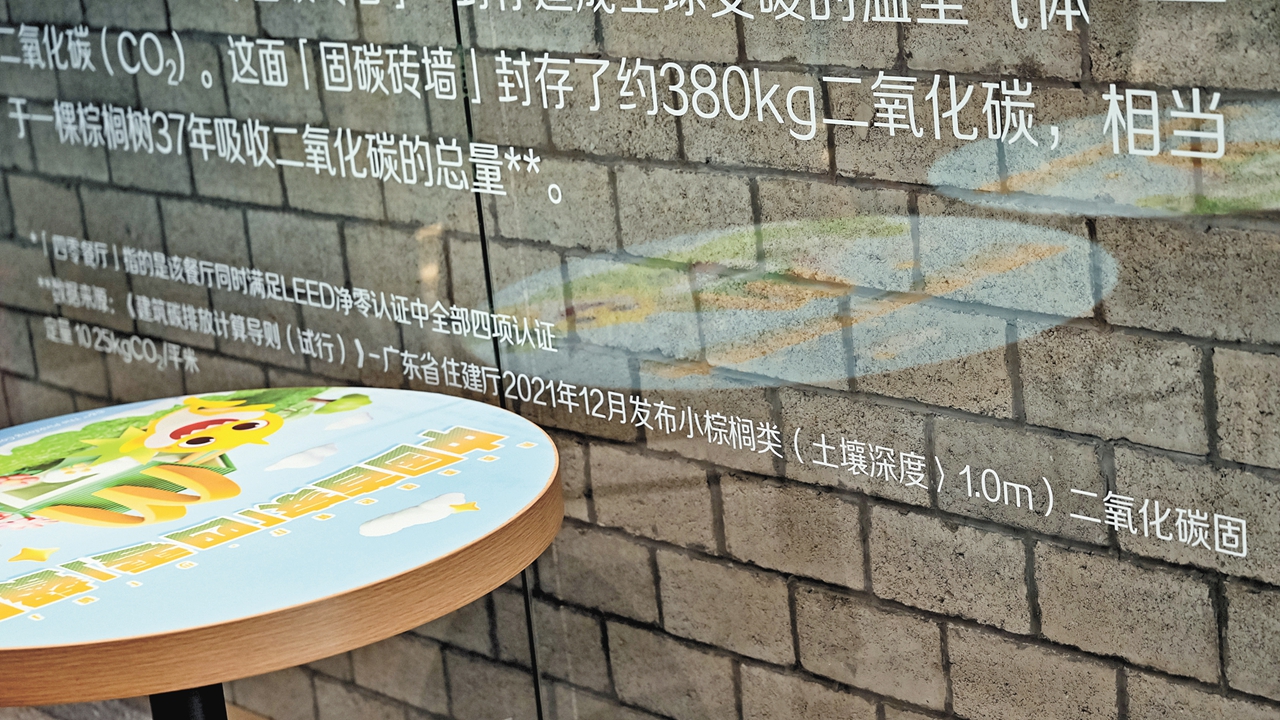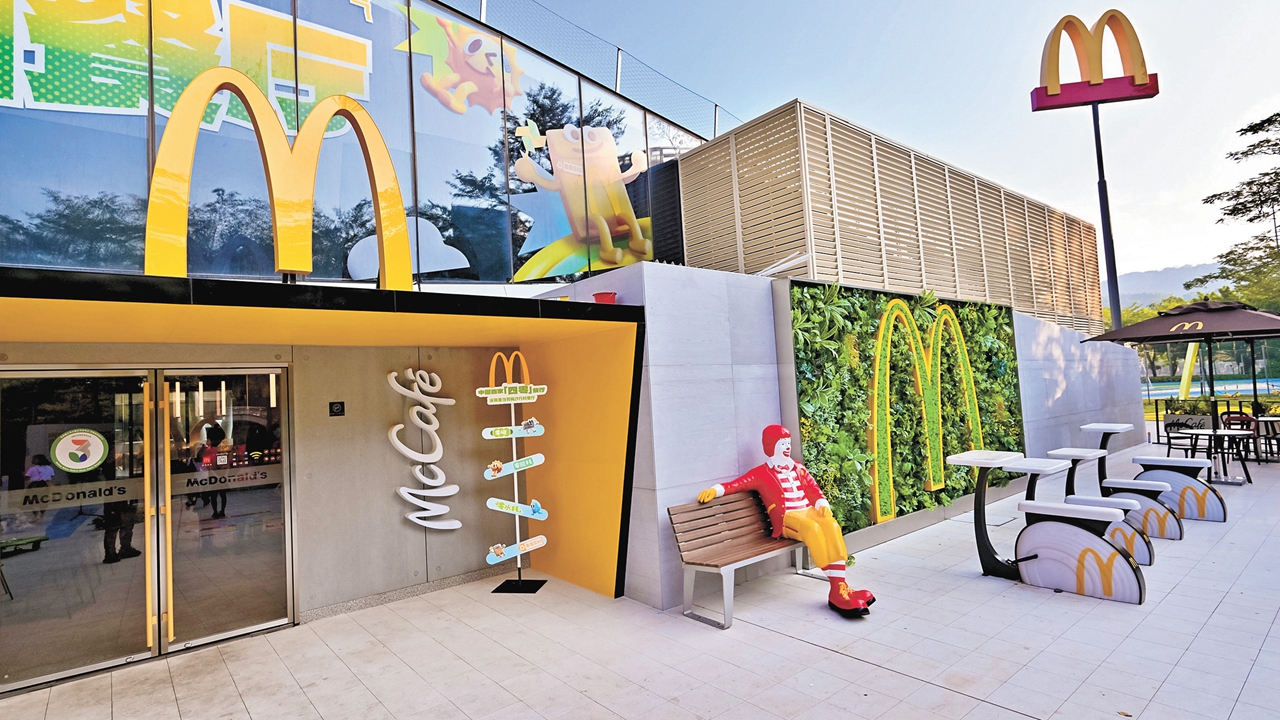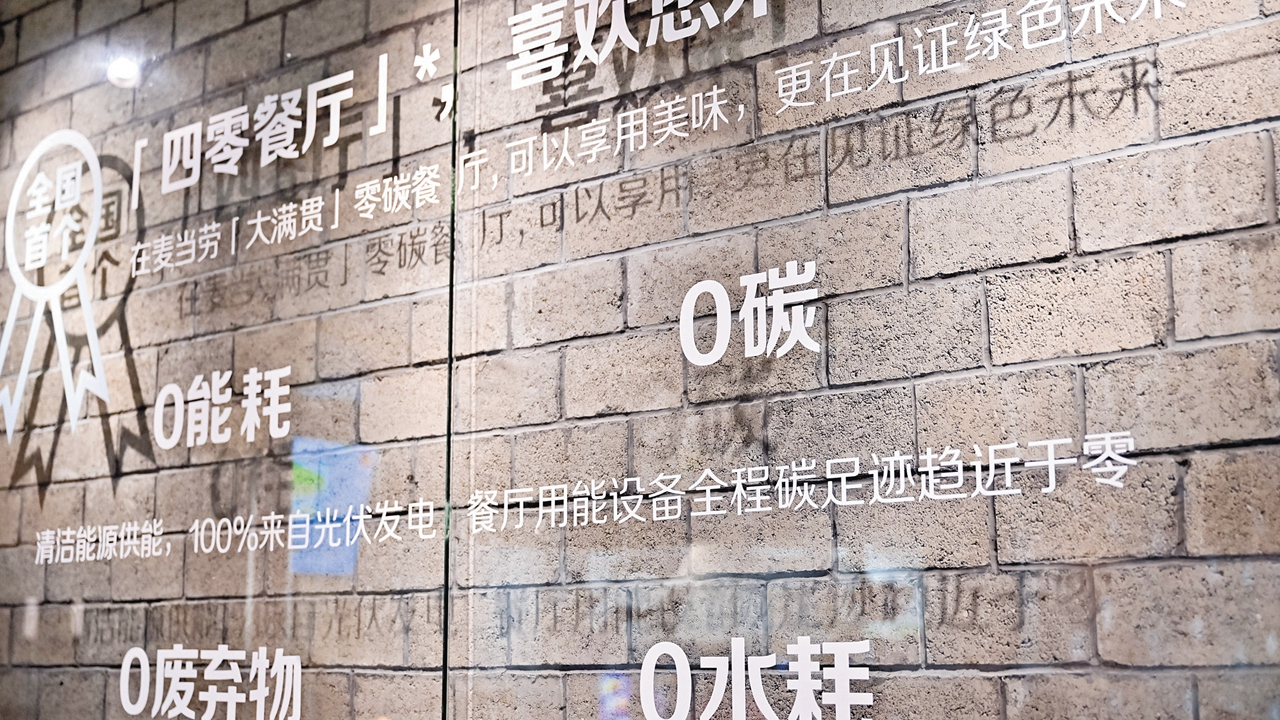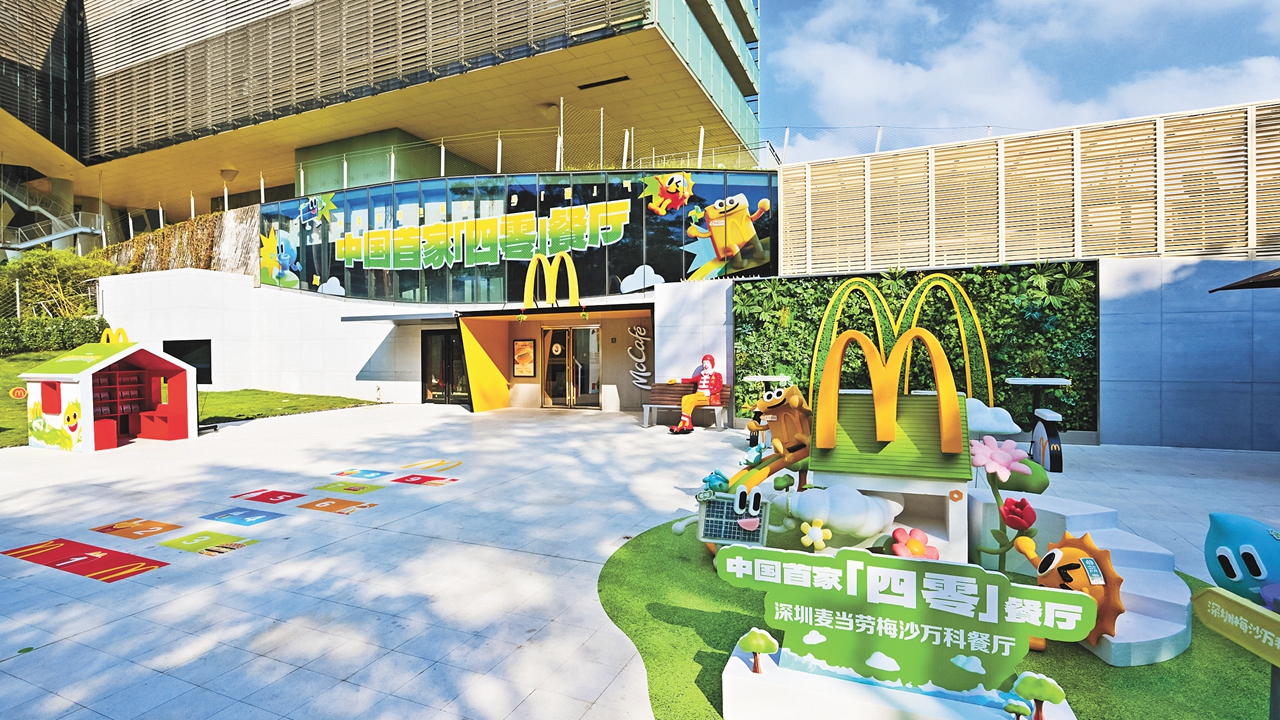Biosphere 3 hosts China's 1st LEED-certified eatery
Writer: Liu Yangyang | Editor: Lin Qiuying | From: Original | Updated: 2024-12-03
In mid-October, China’s first “Four-Zero”restaurant opened its doors in Shenzhen, setting a new standard for sustainability in the fast-food industry. Operated by McDonald’s, the restaurant, located at Biosphere 3, Dameisha Vanke Center Carbon-Neutral Park in Yantian District, meets all four criteria for LEED net-zero certification: Zero Carbon, Zero Energy, Zero Waste, and Zero Water.
LEED (Leadership in Energy and Environmental Design) is the world’s most recognized green building rating system. The restaurant’s location, Biosphere 3, reflects a commitment to eco-friendly innovation with its advanced green infrastructure, including solar energy, rainwater harvesting, and waste recycling. As a near-zero carbon pilot zone, it exemplifies Shenzhen’s push toward sustainable urban development.
A wall of the McDonald’s Dameisha Vanke restaurant features carbon-sequestering bricks, which are capable of trapping around 380 kilograms of CO2 — equivalent to the amount a palm tree absorbs over 37 years. File photos
“This innovative restaurant marks McDonald’s latest step in expanding our green footprint in China,” said Phyllis Cheung, CEO of McDonald’s China. “Since 2018, we have designed new restaurants to meet LEED standards, and over 3,300 of our 6,500 locations now carry LEED green certifications. The McDonald’s Dameisha Vanke restaurant will be the first in China — and possibly the world — to achieve all four LEED net-zero certifications. It is a new starting point for us to leverage our brand to serve both communities and the environment.”

The McDonald’s Dameisha Vanke restaurant is nestled in Biosphere 3.
The “Four-Zero” initiative significantly reduces the restaurant’s environmental impact. Powered entirely by solar energy generated from the Dameisha Vanke Center’s rooftop photovoltaic panels, the restaurant operates with an almost zero carbon footprint. An advanced waste management system processes food waste on-site through a black soldier fly composting method, which converts waste into reusable resources to achieve a zero-waste model. Rainwater and graywater are also collected and recycled for kitchen use, ensuring a net-zero water footprint.

A wall of the McDonald’s Dameisha Vanke restaurant features the “Four-Zero” initiative.
The restaurant integrates cutting-edge sustainable technologies. Approximately 70% of its cooling equipment uses low global warming potential (GWP) refrigerants, thereby reducing the potential for global warming by 70%. In a first for McDonald’s China, the building features carbon-sequestering bricks capable of trapping around 380 kilograms of CO2 — equivalent to the amount a palm tree absorbs over 37 years.

The McDonald’s Dameisha Vanke restaurant is nestled in Biosphere 3.
Inside the restaurant, all building materials are GREENGUARD certified to minimize chemical emissions, and 90% of the equipment is Energy Star certified, reducing the overall electricity demand. Smart energy management systems enhance operational efficiency and further reduce emissions, while air conditioning and lighting are digitally managed to optimize both customer comfort and energy use.
Wang Shi, founder of Vanke Group and chairman of the Vanke Foundation, highlighting the larger implications of the project, said, “Building green communities is not only a corporate responsibility but a commitment to the future. This collaboration with McDonald’s injects fresh energy into our shared vision and encourages more companies to join the green transition.”
Jing Wang, vice president of the U.S. Green Building Council, North Asia, praising McDonald’s China for its eco-conscious leadership, stated, “LEED net-zero certification has become a beacon in sustainable building. We are thrilled to see consumers experiencing this green dining model at McDonald’s and hope this inspires more people to adopt low-carbon lifestyles.”